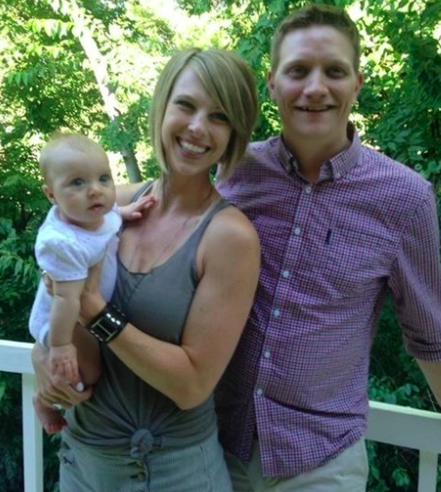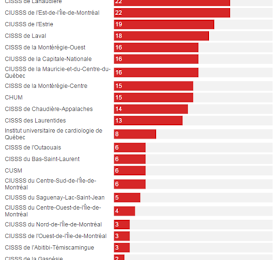 By Alexis Waggoner, from Arise
By Alexis Waggoner, from Arise
About Alexis Waggoner: Educated in Journalism, I worked for over 10 years in the fields of journalism and marketing. My love for writing and research continues to be part of my professional pursuits.
This project is born out of my own process toward deeper theological understanding. Feeling the church didn’t offer what I was looking for, I journeyed to Seminary where I received an M.Div from Union Theological Seminary at Columbia in New York, focusing in Systematic Theology. I am passionate about reaching people who are in a place similar to where I was several years ago – providing them (and the organizations, churches, and schools that serve them) with an opportunity to deepen their faith and walk, through biblical and theological education.
I am a licensed minister, professor at Belmont University, and a chaplain in the Air Force Reserves. I make my home in Nashville (by way of NY and SF) with my husband of 12 years, Ryan (who has been described as “the most interesting man in the world”), and my baby, Junia (whose grandparents describe her as the most interesting baby in the world).
I don’t really like reading the creation story.
This is partly because I skip ahead to what is often described as the “sin story.” I don’t like being told that “the man shall rule over” me (Gen 3:16). To Christians who do not ascribe to gender equality, this verse is prescriptive. It’s used to explain and justify the hierarchy of patriarchy. It’s used to support male headship, and deny women full inclusion in the church as people of God.
If this is your reaction to the first few chapters of Genesis too, I empathize! But it’s time we flipped the script. Egalitarians shouldn’t shy away from this passage. Correctly interpreted, Genesis 3 is a foundational text in a theology of equality.
What is it that you have done?
The creation story is an explanation of why things are the way they are. This text, likely written during Israel’s monarchal period, recounts the nation’s origin story. It has similarities to the creation stories of other people groups around the same time, which tells us that the urge to label and understand sin and dysfunction was great.
Just by grasping the intent of the text—to explain humanity’s existence and experience—we begin to see that this story is not prescriptive but descriptive. It was written to help Israel better understand its context. To draw out what it could mean today, in our context, we must look at the larger principles within the text.
I will put enmity between you
When humanity makes a choice to put an end to their perfect relationship with God, the fallout is wholesale. From the “sin story,” we get a picture of broken relationship at every level.
The woman and man’s relationship to creation is cursed (Gen 3:15, 17-18). God promises that there will be discord between the woman and the snake, specifically. The man is promised difficulty in working the ground, being forced to sweat for the food he needs to eat.
Thus, the relationship to work is cursed and the woman is promised her own toil through bearing and delivering children. Additionally, their relationship to God is cursed (Gen 3:19, 23). They are expelled from the garden, God’s constant physical presence is removed from their lives, and they are cursed to return to dust.
But most importantly for our purposes, the relationship between the man and woman is cursed: “your desire shall be for your husband, and he shall rule over you” (Gen 3:16). There’s going to be a relational power struggle, and men will rule women through aggression and domination.
East of Eden
Ancient Israel likely used this story to make sense of their culture: An agrarian, nomadic, male-dominated society that constantly needed to be reminded what it looked like to be in right relationship with God, creation, and themselves. That was their reality, and the “sin story” helps explain how they came to be.
But this is a story about sin, a story about the way things are, not the way they’re supposed to be. For that, we need to go back to the passages we gloss over when focusing on the sin/curse portion.
The Genesis account tell us God made humanity in God’s image (Gen 1:27). It also tells us that God’s character contains the divine feminine (another truth we often gloss over!), and it reveals that human character is whole and complete in the beginning.
There is nothing lacking in God—no need for a hierarchy, no dominance or subordination. From the first chapter of the Bible, God outlines a theology that is inclusive of both women and men as expressions of the divine.
The creation narrative continues, telling the story in a different way. In Genesis 2, God makes Adam a partner (Gen 2:18)—someone to cling to, with whom he can become one flesh (Gen 2:24). The fact that Adam was created first cannot be equated with primacy when interpreted with the assumption of partnership and unification of flesh in Genesis 1.
Before sin enters the picture, God had created a symbiosis where all of creation—including humanity—was living into its full God-given image and potential without a need for oppressive systems or structures. We’re told that this is the ideal.
The way to the tree of life
The sin story is a story of curses, a story that explains the broken world we live in. The creation story is a story of beauty and ideals. So why do so many of us fight to uphold the system created by sin, and not the system created for human thriving?
Why would we want to live into a curse? Why would we want to use that as our measuring stick?
Not only should this feel wrong to us, it is wrong. Living into the curse and using that to support our cultural structures is the opposite of what Christ is doing, and asking us to do. It’s the opposite of what the Genesis narrative reveals as the ideal expression of creation.
Gender inequality is a curse that leads us back to the dust. Sin explains why we experience it, but we are expected to do all we can to bring creation back into right relationship with each other, with creation, and with God.





